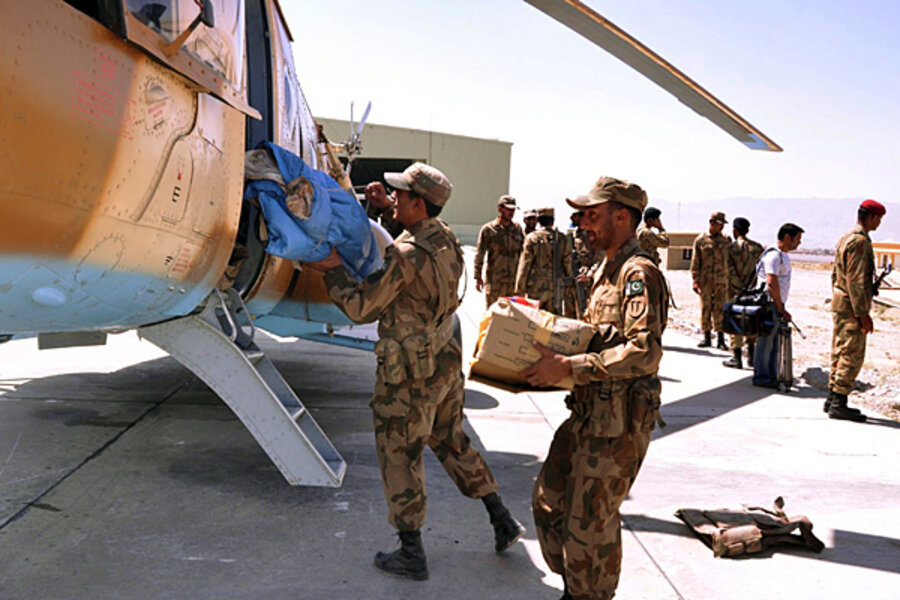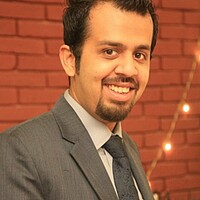Pakistan earthquake relief efforts face serious security risks
| ISLAMABAD, Pakistan
A relief helicopter and aid workers have come under attack, as government groups struggle to get aid to remote areas of southwestern Pakistan where a magnitude 7.8 earthquake left more than 350 dead and injured some 500 more Tuesday.
Two rockets fired from the ground were aimed at a military helicopter carrying chairman of National Disaster Management Authority (NDMA) Major Gen. Muhammad Saeed Aleem and other senior military official as it was conducting an aerial survey in a routine attempt to register the scope of damage. Although no one was injured in the helicopter incident it underscores the inability to get aid and relief to the affected areas, so remote that the death toll is far from finalized. And it's a rising concern among social workers and human rights watchers.
“There is a lot of animosity against the military in this area and since the Pakistani Army is leading the rescue efforts, it will be very difficult for them to operate, without coming under further attacks,” says Siddiq Baloch, editor of Balochistan Express, an English daily published from Quetta, the provincial capital.
“The areas where the earthquake has hit the most [are] inhabited mostly by the insurgents like Allah Nazar who, although in hiding, has been leading the separatist movement in the province,” says Mr. Baloch. And militants like Nazar are angry with the Pakistani government.
The people of Balochistan have been fighting an insurgency since Pakistan’s independence in 1947 and consider their province occupied territory by the Pakistani state.
People in this area feel they have been neglected for decades – they cite lack of schools, roads, and civil provisions here as proof. And the fact that in the past decade there have been multiple military operations against the insurgents in the same region feeds ill will toward the government.
The earthquake destroyed 90 percent of Balochistan’s largest district called the Awaran, but reports suggest that as of yet the government has not been able to reach out to all the villages that have been affected.
“For the first 24 hours no one could reach the [worst affected] areas. Even now most of the aid is stuck in Quetta [the capital city of the province], because security is a concern,” says Baloch. “If the government had paid any attention to these areas from before and built health and medical facilities there, which are currently nonexistent, things would have not been so bad. Many of the critically injured continue to die since they are receiving no help,” says Baloch, predicting that the death toll could reach 1,000.
Local social workers say this could be an opportune moment for the government to win hearts and minds of those who are disillusioned.
“It is a great opportunity to reach out to the locals through aid, and it is never too late to show them that you care,” says Mohammad Dawood, who heads a local nongovernmental organization called the National Welfare Organization in Balochistan, and has been attempting to provide aid in the area where the earthquake hit.
“The belt where the earthquake has happened is dangerous, especially for the Pakistani military and the paramilitary forces, and they will come under attack,” say Mr. Dawood explaining that the affected areas are governed by tribal chiefs, many of whom are anti-state.
One solution, he says is that local people from the tribes be enlisted to help coordinate the aid efforts, and that security forces only oversee the effort from a distance.









